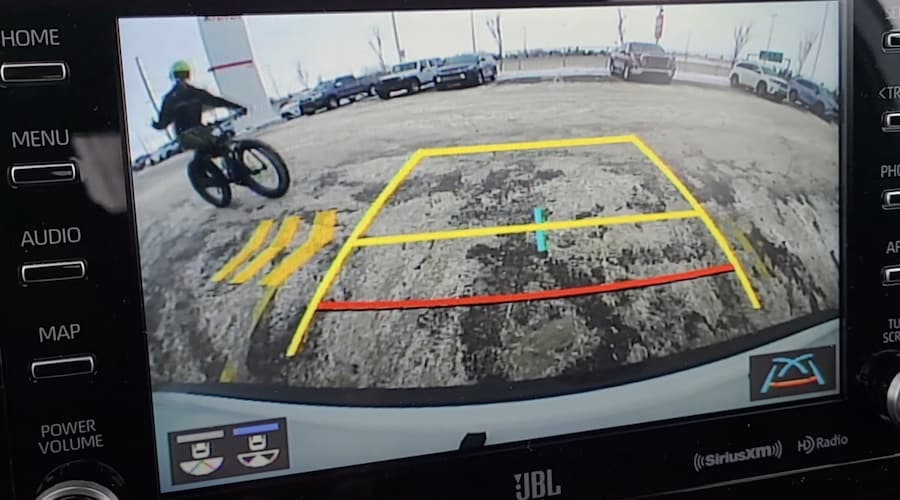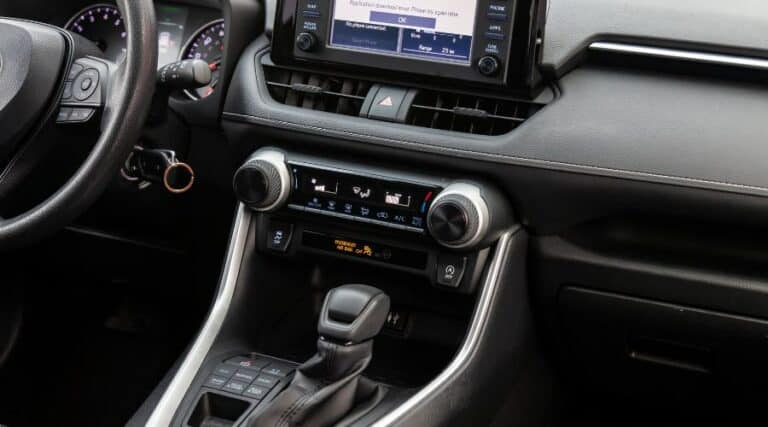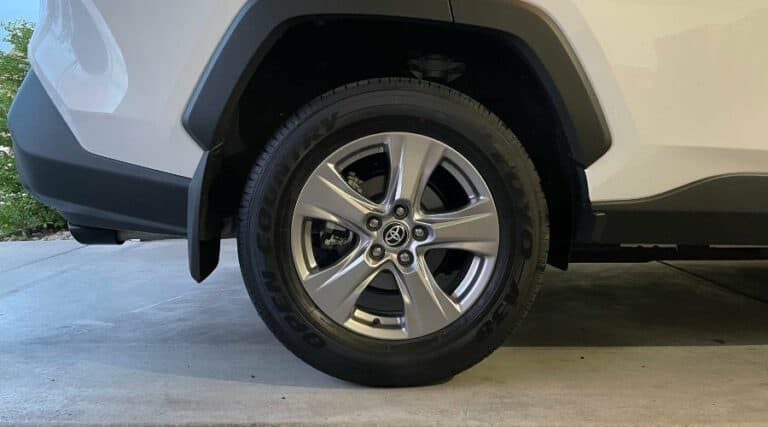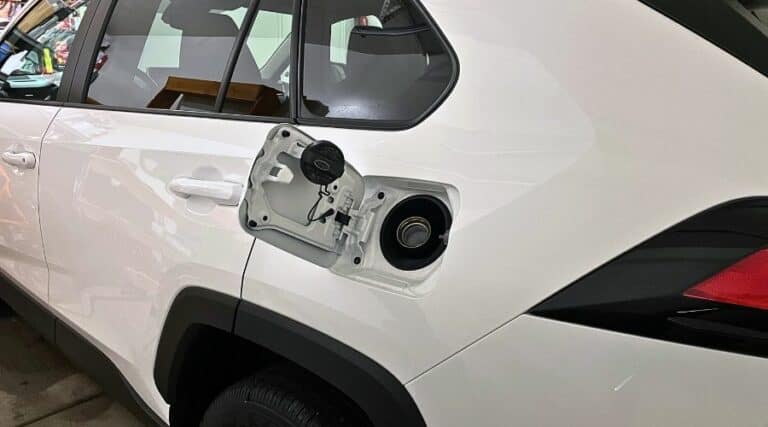Toyota RAV4 Rear Cross Traffic Alert (RCTA) System Guide
Toyota is committed to ensuring the safety of its drivers, and the Rear Cross Traffic Alert (RCTA) is a testament to that commitment. This innovative feature, available on select models as a part of Toyota’s Safety Sense System, is designed to help drivers avoid unexpected collisions when backing up. Let’s dive into the details of this remarkable system.
Are you interested in mods and accessory ideas for your RAV4? See the 45 best Toyota RAV4 mods & aftermarket accessories.
What is the Toyota RCTA (Rear Cross Traffic Alert) System?
Toyota’s Rear Cross Traffic Alert (RCTA) is a safety feature that warns drivers of oncoming cross-traffic from the sides when reversing, helping to avoid collisions. It uses radar sensors to detect approaching vehicles and alerts the driver through visual and auditory signals.
Toyota’s RCTA is a part of Toyota’s safety sense system which includes the Blind Spot Monitor (BSM). Both functions utilize radar sensors located inside the left and right sides of the rear bumper to detect vehicles within monitored areas.
What is Toyota’s Lane Tracing Assist (LTA) system? See all that you need to know about the Toyota RAV4 lane assist.
How Do I Turn on RCTA?
There are two different ways that you can Turn on the RCTA in a Toyota vehicle depending on the specific model. One way to turn on the RCTA is under the BSM item in the multi-information display settings and the other way is under a separate RCTA item in the same settings list.
In some Toyota models a standard switch labeled BSM on the instrument panel controls both features, allowing them to be turned on or off.
Other Toyota models include the RCTA system as its own menu item on the multi-information display that can be turned on and off under the ‘settings’ tab. The multi-information display sits right behind the steering wheel.
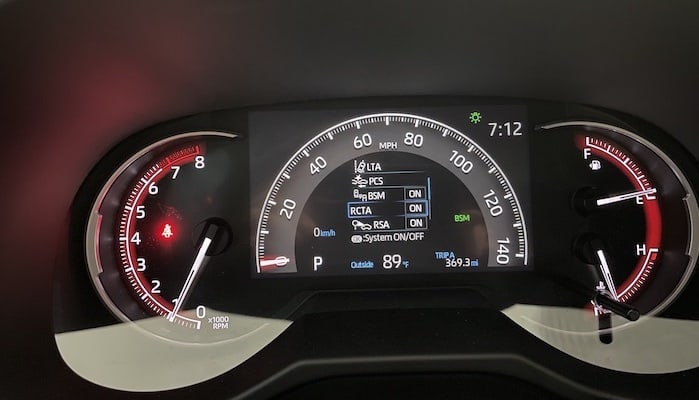
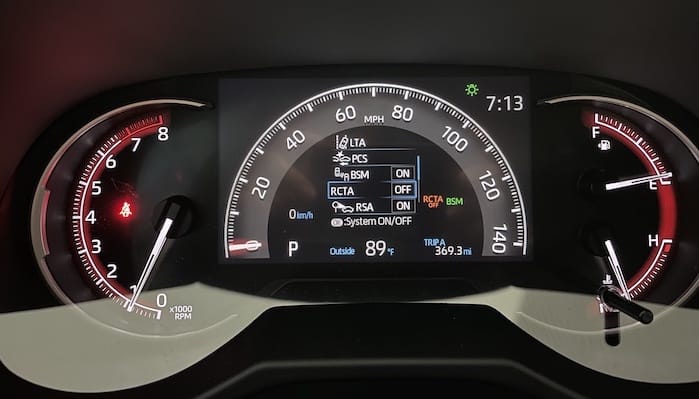
Curious about your RAV4’s fuel efficiency? We’ve got you covered!
- Want the numbers? Check out our RAV4 MPG calculator for city, highway, and combined mileage for any year and trim.
- Looking for real-world insights? See real-world RAV4 gas mileage data from fellow RAV4 owners and how far your RAV4 can take you on a full tank of gas.
- Ready to estimate your weekly gas costs? Dive into our Toyota RAV4 Fuel Consumption Calculator: Estimate Gas Costs and take control of your fuel budget!
How Does RCTA Work?
The RCTA function operates when the vehicle is in Reverse at a speed of less than approximately 5 mph (8 km/h). It detects vehicles as big as or larger than a bicycle approaching laterally from the right or left rear at speeds up to around 25 mph (40 km/h).
If the RCTA system judges that another vehicle may intersect with its path, it alerts the driver by:
- Flashing the outside rearview mirror blind spot monitor indicator lights
- Sounding a buzzer mounted in the rear cabin space
The buzzer can alert of faster-moving vehicles from farther away, giving the driver more time to react.
Interested in Changing the oil in your RAV4 yourself? See a step-by-step guide on how to change oil in a RAV4 and everything you’ll need.
Limitations and Responsibilities
While the RCTA is a valuable assist, it’s not a replacement for careful driving. It may not function correctly in some conditions, including inclement weather, the size of the adjacent vehicle, or the speed at which that vehicle is approaching.
The sensors in the rear bumper and/or the rear camera must be kept clean and clear of any obstructions for the RCTA to operate normally. Ultimately, the driver is solely responsible for safe driving at all times.
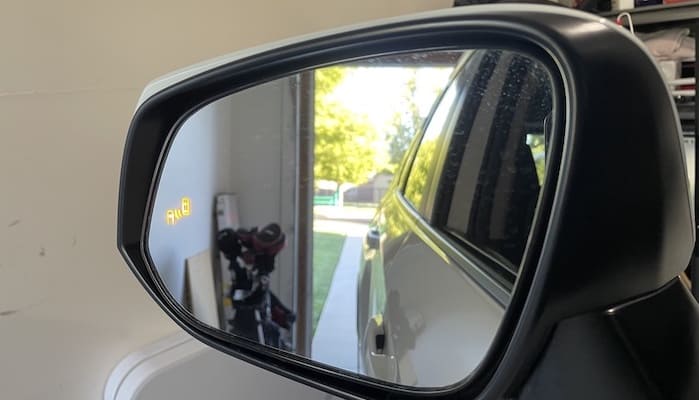
Adjusting the Volume on Toyota’s Rear Cross Traffic Alert (RCTA)
Want to crank up the volume on your Toyota’s RCTA system or perhaps tone it down a bit? You’re in luck! Adjusting the volume is a breeze, and I’m here to guide you through it. This tutorial is suitable for RAV4s and other Toyota models.
Important Note: Not all Toyota’s have this volume setting included. Unfortunately, my 2023 RAV4 does NOT have a RCTA volume setting. I have seen 2020 and 2021 Toyota models that DO have it included.
Do you want to reduce the road noise in your RAV4? See the top 5 quietest tires for Toyota RAV4.
How to Change the Volume on a Toyota RCTA (Rear Cross Traffic Alert) System
Step 1: Turn On Your Vehicle
First things first, turn on your vehicle. You’ll need the ignition on to access the settings we’re about to explore.
Step 2: Navigate the “Settings” on the Multi-Information Display
Now, don’t get lost in the multimedia display; that’s not where we’re headed. Instead, focus on the digital display behind the steering wheel in a car called the multi-information display.
You’ll be using the left or down arrows, but also the up and down arrows, along with the “OK” button. Here’s the sequence:
- Cycle through with the greater than arrow until you reach “Settings.”
- Don’t hit OK yet! Go straight down.
- If you want to toggle the RCTA on and off, press “OK.”
- To change the volume, go down to “Vehicle Settings” and find the hidden “RCTA Volume” function.
Step 4: Adjust the Volume
You’ll find three volume settings, with three being the loudest. Choose the one that suits you best. A little louder can be better, in my opinion, but hey, you’re the boss here!
Step 5: Confirm and Exit
Once you’re done, hit the return arrow or navigate back up to “Settings.” If you go too far, don’t worry; just head back to “Settings.”
Why is my Toyota telling me to take a break? See what the Toyota coffee cup symbol is.
Which RAV4s Come with Rear Cross Traffic Alert (RCTA)?
Rear Cross Traffic Alert (RCTA) is available in Toyota RAV4 models starting from the 2017 model year up to the current 2023 model. This feature was introduced as part of Toyota’s commitment to enhanced safety through the Toyota Safety Sense package.
RAV4 Models with RCTA:
- 2017
- 2018
- 2019
- 2020
- 2021
- 2022
- 2023
Toyota Safety Sense: An Overview
Toyota Safety Sense was introduced in the 2017 RAV4, marking a significant step in providing drivers with advanced safety technologies. This suite of features is designed to support the driver’s awareness, decision-making, and vehicle operation over a wide range of speeds.
Toyota Safety Sense Features:
- Pre-Collision System with Pedestrian Detection
- Lane Departure Alert with Steering Assist
- Automatic High Beams
- Dynamic Radar Cruise Control
These features collectively work to enhance the driving experience, making journeys safer and more comfortable. Whether you’re navigating busy city streets or cruising on the open road, Toyota Safety Sense in the RAV4 offers a helping hand.
How can you get better gas mileage in your RAV4? See how to increase gas mileage in your RAV4 (tips that work).
Frequently Asked Questions about RCTA in Toyota Vehicles
Your RCTA may be off due to manual deactivation or a temporary obstruction blocking the sensors. Check the settings on your vehicle’s dashboard to ensure it’s enabled, and make sure the sensors are clean and unobstructed.
The RCTA light being on typically indicates that the system is actively detecting cross-traffic while you are in reverse. If the light stays on continuously, it may signal a malfunction, and you should consult your vehicle’s manual or a Toyota dealer.
RCTA (Rear Cross Traffic Alert) warns you of vehicles approaching from the sides when reversing, while BSM (Blind Spot Monitor) alerts you to vehicles in your blind spots while driving forward. Both features use the same radar sensors but serve different functions to enhance driving safety.
Your rear cross traffic alert may not be working due to various reasons such as sensor obstructions, system malfunctions, or being manually turned off. Check for dirt or debris blocking the sensors, ensure the system is turned on in the settings, and consult your vehicle’s manual or a Toyota dealer if the problem persists.
Conclusion
Toyota’s Rear Cross Traffic Alert (RCTA) is a significant advancement in vehicle safety, providing drivers with additional awareness and reaction time when backing up. However, it’s essential to understand its limitations and ensure proper maintenance for optimal performance.
Please consult your Toyota owner’s manual for specific details related to your model, and remember, safe driving is always your responsibility.

